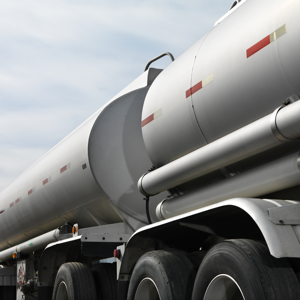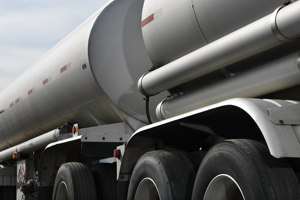It is important for tire dealers to understand that trucking fleets are in the business of hauling freight. Trucking fleets rely largely on their local tire dealer to assist in optimizing their tire program. It is not always easy to convince fleets to evaluate a new tire brand and model because of the complexities involved in tire tracking and data gathering.
Fleets make decisions based on tire performance facts. The initial buying price of the new tire or retread alone will not motivate the fleet to start purchasing a certain tire. The key metrics are cost per mile, treadwear and fuel economy over multiple retreads. So what is involved in tracking tires and generating real tire data?
Determining tire sample size is the first step in the evaluation process. The sample size has to be large enough to be able to make statistically valid decisions after the evaluation is completed.
Is Tire A better or worse for fuel economy and/or treadwear compared to Tire B?
Using too small a tire evaluation sample will lead to a total waste of effort after a long time of testing and data collection. If the sample size is larger than really needed, that creates a lot of unnecessary effort with no payback, frustrating everyone.
The TMC of the American Trucking Associations recommends a test sample size of 30 tires. If a fleet wants to evaluate a new steer tire, then 30 vehicles would be required for a serious evaluation – 15 vehicles equipped with Tire A and 15 vehicles equipped with Tire B. If more tires are being considered, then the dealer will need that many more power units for a proper comparison test.
Most fleets have a plethora of vehicle makes and models. You don’t want to choose a variety of different vehicle configurations when you are trying to evaluate the best tire for the fleet. Any evaluation must try to minimize variables. Choosing 30 vehicles that are as close as possible to each other is only going to help the evaluation in making it statistically valid.
If the fleet has a dedicated run where the vehicles always see the same roads and route, then those are the obvious vehicles to choose for the evaluation. Try to select vehicles that experience similar service vocation every day if a dedicated group of vehicles is not available.
Setting the Test
Once the vehicles are chosen for the test, the next phase is to determine exactly what data should be recorded and at what frequency.
Key tire data should include:
• Vehicle make/model and VIN number
• Tire make/model, size and load range
• New tire and/or retread cost
• Vehicle odometer reading at start and finish
• Dates test tire installed
• Wheel position where installed
• Tread depth at start and end
• Wear condition at end
• Measured tire air pressure over test period
• Gallons of fuel consumed during test
Tires need to be mounted on the test vehicles over a short time span because tire treadwear changes more than 10% in hot versus cold weather. Minimizing the time variable will also help in gaining meaningful data during the evaluation.
The frequency of interim tire inspections is very important to the success of the evaluation. Tires may become damaged during the course of the multi-year evaluation and simply disappear from the system. By checking and inspecting tires on a regular basis, you will always have the most recent tire data to fall back on in your analysis.
Should the team inspect tires every week, every month, once a quarter or only during scheduled preventative maintenance? This decision is based on a combination of vehicle annual miles and vehicle availability.
The last buy-in for any successful tire evaluation is to talk to the drivers and to the maintenance staff before the kickoff of the evaluation.
Drivers will let you know how the tires are doing when it comes to overall performance of ride, handling and traction. Truck service techs are responsible for gathering and recording the data.
Ensuring that everyone is going to record data the same way will minimize another key variable. And where to measure tread depth on a test tire is always a good discussion item with the service techs.
Medium truck tires have a long life expectancy. In line haul service conditions where vehicles may go from coast to coast, steer tires can average 150,000 to 200,000 miles prior to removal. Drive tires can reach 350,000 to 400,000 miles, and trailers about 200,000 miles.
Vehicles running in line haul service average about 120,000 miles per year. Tag team drivers can easily reach over 200,000 miles per year. If the tire evaluation were measuring casing durability, which requires running multiple retreads on every casing, it would take several years or longer to complete the evaluation.
Analyzing the Data
Once you begin collecting data, it is crucial to store this information in a database, particularly one that will allow easy analysis of the data in many different ways. The basic calculations of cost per mile and miles/32-inch of tread depth are straightforward. Analyzing different kinds of irregular wear conditions will determine if one type of vehicle was more susceptible versus another type of vehicle. Maybe the tires measured with low tire pressures had the highest incidence of irregular wear and early tire removals.
Fuel economy measured in miles per gallon is a hot button for most fleets. Even a 1/10th mile per gallon improvement from one tire to another can impact a fleet by millions of dollars in annual fuel bills. In a drive tire evaluation, it is important to determine the treadwear of the tires running on the first drive axle versus the second drive axle.
Typically in line haul operation, the rear tandem tires wear about 10%-12% faster than the front axle tires. In pickup and delivery and city service, where there is a high degree of turning, the rear axle can scrub off rubber at up to a 50% faster higher rate. During turns, the pivot point is the front trailer axle while the rear trailer tires will see greater scrubbing.
Other Considerations
Fleets want tires that generate the best possible fuel economy, highest mileage to removal, excellent retreadability, and are not prone to developing uneven and irregular wear. Tires that are less sensitive to common vehicle issues such as tractor and trailer misalignment are also highly desired, and these issues must be considered when running a test.
Improving vehicle fuel economy is clearly desired by every fleet. Even a seemingly minor improvement in miles/gallon will save a substantial amount of money for a fleet. Sure, it is helpful to get an extra five to 10,000 miles out of every set of tires, but for many fleets the trump card is fuel efficiency.
If your customer has 100 trucks averaging 6 mpg that travel 100,000 miles per year, each truck would consume 16,667 gallons of fuel per year. If the fleet was able to see a conservative 2% improvement in fuel economy due solely to spec’ing fuel efficient tires, then those same 100 trucks would each only use 16,340 gallons/year. A savings of 327 gallons per year per truck at $4 a gallon for diesel, computes to an annual fuel savings of $130,800 for the 100 trucks.
To maximize tire fuel economy, it is vital that test tires are properly inflated. Running tires that are underinflated will negate any fuel economy measurements – the obvious advantage of purchasing fuel efficient tires.
Inflation pressure plays a key role in maximizing tire removal miles and reducing irregular wear. Early onset irregular wear leads to premature tire removal, which also affects vehicle fuel economy.
A tire with smooth, even wear will have the best fuel economy versus the same tire that has, for example, shoulder cupping and/or high-low lug wear.
There are many tire makes and models available in the market along with a range of tread depths depending on the specific wheel position.
But tread depth does not necessarily correlate with higher mileage. The deeper the tread depth, the more heat that will be generated – and heat is never a good thing when it comes to tires. Too much heat leads to breakdown of the rubber compounds that will also hurt the casing retreadability.
Too much tread on a lug drive tire design will cause those lugs to squirm as the tire runs down the highway. This will lead to uneven and irregular wear that also reduces fuel economy. There is always a sweet spot when it comes to initial tire tread depth, and finding that should be a goal for any fleet testing.
Looking Ahead
When conducting a fleet tire test, it’s also important to consider the future – how well the test tires set up for retreading.
Start by finding out what the fleet’s desired removal point is for retreading casings. Running tires down to the legal tread depth limit of 4/32-inch for steers and 2/32-inch for drives and trailers will help to increase removal miles, but is usually not good for protecting the tire casing.
Cuts, punctures and stone holding/drilling occur more frequently when the tread depths get too low. This is why it is common practice for fleets to target 6/32- or 8/32-inch remaining tread depth for a steer tire, and somewhere between 4/32- and 8/32-inch tread on drives and 3/32- to 4/32-inch on trailers when determining when to take a tire out of service. A retread is approximately one-third the price of a new tire, so it only makes sense that a new tire maximizes the number of retreads per casing.
Generating this level of tire data for a fleet is a tremendous value-added, but fleets just do not have the time to analyze tire data. Dealers can take advantage of this opportunity by supplying the pertinent tire evaluation results.
Working with fleets to develop a well thought-out tire testing protocal and complete tire program will reduce cost per mile and improve fuel economy – and solidify you as a valuable partner.














